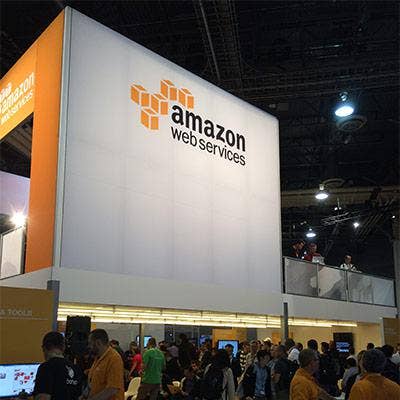AWS Acceleration: Amazon's Cloud Growth Blows Past Wall Street Expectations

Amazon closed out its fiscal year with a strong quarter again powered by a cloud business that delivered almost 75 percent of the e-commerce giant's profits and, for the first time, surpassed a $20 billion run rate.
Amazon Web Services (AWS) notched 45 percent year-over-year growth in Q4 – an acceleration from the previous quarter that came at the same time margins expanded, according to financials disclosed Thursday.
The public cloud leader's $1.35 billion in operating income delivered 73 percent of Amazon's net profit in the quarter that ended Dec. 31, 2017. AWS' quarterly revenue was $5.11 billion.
[Related: Cloud Cornerstones: 19 New Ways To Connect Storage To AWS]
Amazon will continue substantially investing in the public cloud's geographic expansion and a buildout of its technology and sales teams, CFO Brian Olsavsky told investors in an earnings call.
In 2017, AWS saw roughly $17.5 billion in revenue—more than $5 billion over the previous year.
Because cloud usage escalated even faster than sales, the Q4 acceleration in revenue growth came as price decreases were introduced in December, Olsavsky said.
"Customers continue to add workloads and expand," he said.
The rapid addition of new capabilities had a lot to do with customers ramping cloud adoption.
AWS added more than 1,400 new features and services in 2017, with almost 500 of them debuting in the fourth quarter.
"We're very happy with both the progression of new services and features we can bring to customers, but also their response" to those capabilities, Olsavsky said.
The CFO answered an analyst's question by saying there were no plans to separate the cloud's corporate structure from the larger retail business.
The cloud and consumer divisions have a common management team, and the e-commerce platform is among AWS' largest customers, he said.
"We see a lot of commonality, on the consumer side the use of AWS has driven greater infrastructure efficiencies just like other customers see when using AWS," he said.
At the same time, "AWS is benefitted by the fact they have a large internal beta customer that tries out and uses a lot of their products and services. We see no reason to change the structure we have."
Amazon's overall revenue grew 38 percent in Q4 to $60.5 billion. That beat the forecast of $59.83 billion, according to Thomson Reuters. Amazon, including its Whole Foods subsidiary, saw more than $300 billion in revenue for 2017.
Profits soared to $1.85 billion on a GAAP basis—compared to $749 million the previous year.
For the quarter, earnings-per-share came in at $3.75—analysts had expected $1.83. The jaw-dropping beat was partly due to a windfall from the U.S. Tax Cuts and Jobs Act of 2017 amounting to roughly $789 million.
Amazon stock soared after hours, up almost 6.5 percent after closing trading Thursday at $1,390 per share.
Dave Fildes, Amazon's director of investor relations, said on the earnings call that the cloud division's pricing philosophy remained to introduce periodic price reductions as "a normal part of our business." AWS had reduced prices more than 60 times since its launch eleven years ago, he noted.
The goal remains to create efficiencies in the technology and pass those savings to customers, while delivering new features that allow them to run their infrastructure more efficiently, according to Fildes.
Many of the new features introduced in the last year were related to an emerging artificial intelligence business that saw several products unveiled at the re:Invent conference in December.
Those included Amazon Sagemaker, a managed machine learning service, and the EC2 P3 instances optimized for running machine learning workloads.
Four new AI services were also unveiled at re Transcribe for speech-to-text, Translate for translating between languages, Comprehend for finding insights within text, and Rekognition Video applying deep learning to video analysis.
AWS also launched DeepLens, a wireless video camera enabled with AI features for creating computer learning; and the Amazon ML Solutions Lab, a program that connects Amazon's machine learning experts with AWS customers.